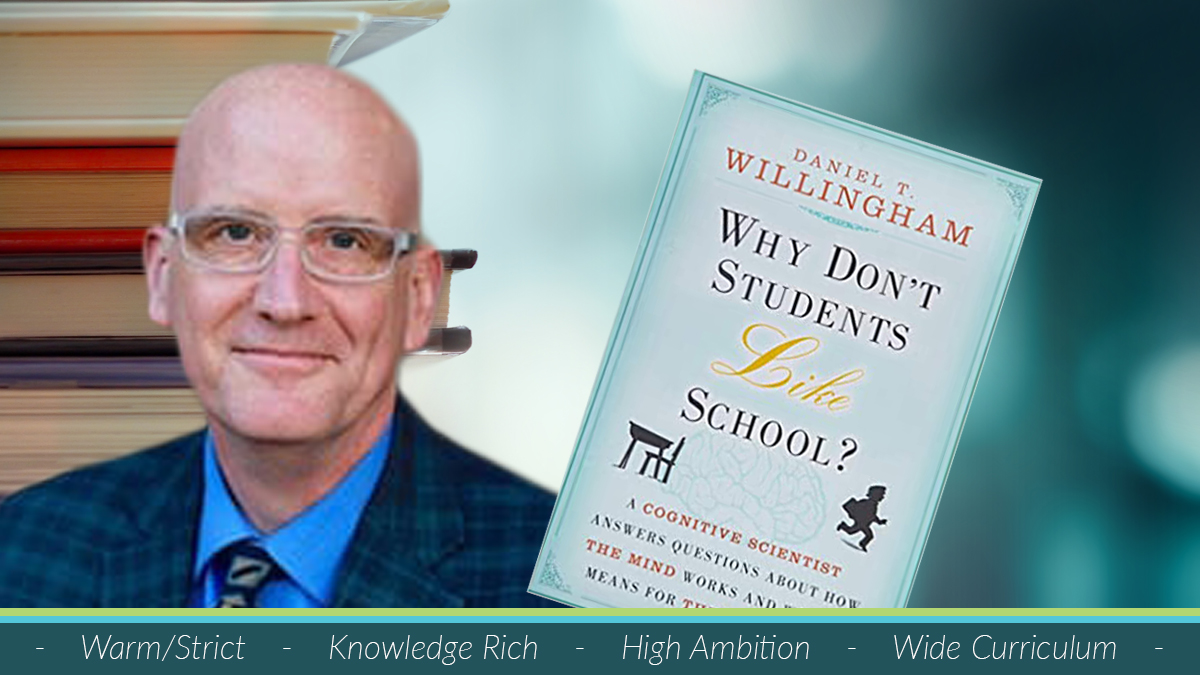“Why Don’t Students Like School?” – Daniel Willingham
“Why Don’t Students Like School?” by Daniel Willingham is simply brilliant.
It’s a proper ‘Ronseal’ book and does exactly what it says on the tin (slash subtitle): “A Cognitive Scientist Answers Questions About How the Mind Works and What It Means for the Classroom.”
One of its strengths is that Willingham doesn’t hang about.
- He kicks off with his key point: cognitive science has made great strides in recent years, but teachers and students haven’t benefitted from these findings, as practice hasn’t adjusted to incorporate them.
- He explains why this hasn’t happened: in the lab scientists can isolate mental processes to study them, but in the classroom they’re all operating simultaneously and interacting in unpredictable ways.
- Willingham then tells us the good news: in spite of this complexity there are actually nine impactful principles that are so fundamental that they do not change depending on context. Importantly they have practical applications for the classroom, and are all backed up by loads of proper research; there’s no folk wisdom or assertion in this book.
And after that – whoosh, you’re onto nine chapters, each one posing a question whose answer is guided by one of the fundamental principles.
For instance, Chapter One’s question is the same as the book’s title, “Why don’t students like school?” Why is it so hard to make school enjoyable? Willingham starts his answer like so:
“Contrary to popular belief, the brain is not designed for thinking. It’s designed to save you from having to think, because the brain is actually not very good at thinking. Thinking is slow and unreliable. Nevertheless, people enjoy mental work if it is successful.”
This leads him to declare the guiding principle for this chapter:
“People are naturally curious, but we are not naturally good thinkers; unless the cognitive conditions are right, we will avoid thinking.”
And then he states the key implication from this principle:
“…teachers should reconsider how they encourage their students to think, in order to maximise the likelihood that students will get the pleasurable rush that comes from successful thought.”
The rest of the chapter explores this further with examples and illustrations – and of course, these are presented in ways that maximise the reader’s likelihood of understanding things and getting the rush that comes from this! It’s a neat approach, and gives each part a nice structure and the book overall a powerful coherence.
While more people are more aware and conversant in such things today, when the book was first published very few in schools had heard of cognitive science and its underlying principles. It’s a text that changed many people’s thinking about learning and successful approaches to teaching, and it continues to be one that people can reach for when they want to get back to fundamentals and rethink things. If you’ve not yet read it, it’s definitely worth doing so – you will be rewarded greatly.
